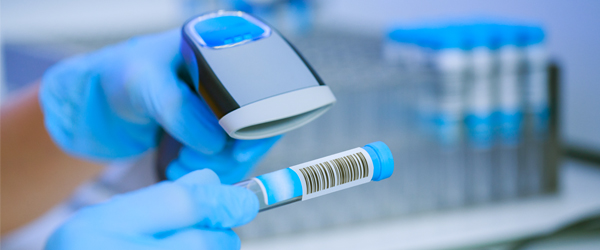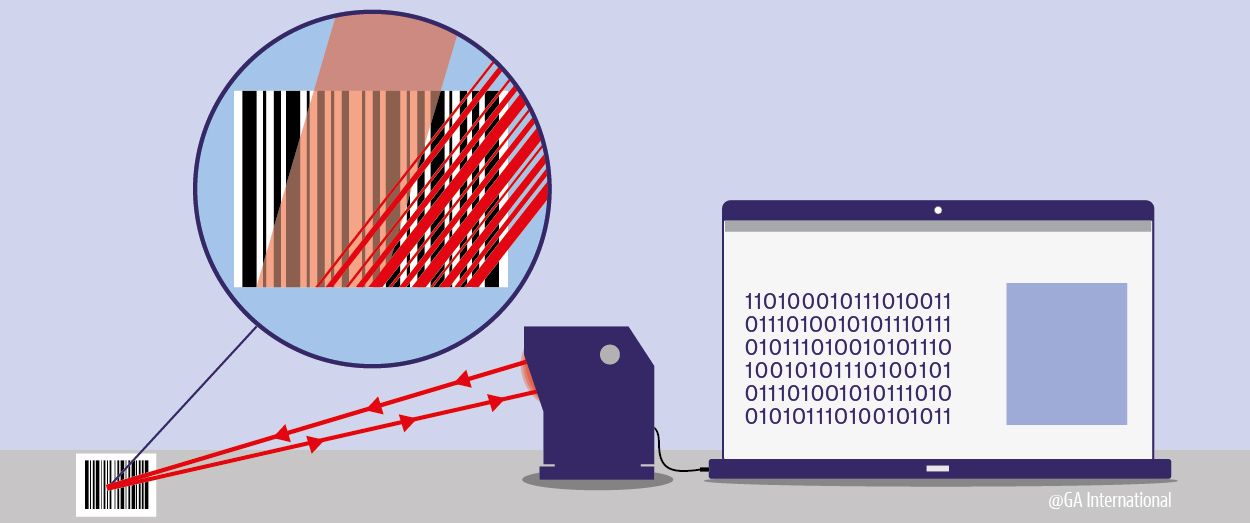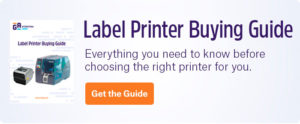 Many industries require barcodes to track their inventory, samples, and equipment. To integrate the data from the barcodes into a tracking system, the barcodes must be scanned when each item is processed. Let’s review how barcode scanners work to relay the information from barcodes to a computer?
Many industries require barcodes to track their inventory, samples, and equipment. To integrate the data from the barcodes into a tracking system, the barcodes must be scanned when each item is processed. Let’s review how barcode scanners work to relay the information from barcodes to a computer?
Basic Function
The most illustrative way to describe how barcode scanners work is to look at the 1D Universal Product Code (UPC) barcode. The width of a UPC barcode is divided into 95 invisible segments, or modules, where some columns are dark, and some are white. When the light from a scanner is shown across the barcode, the barcode will either reflect the light (white modules) back into the photoelectric cell of the scanner or absorb it (dark modules). The photoelectric cell will generate a set of off-on pulses depending on whether light has been reflected to it, which is converted via electronic circuit to on-off pulses, which register as 0s and 1s in the computer. If light is absorbed by a dark module, the scanner will register it as a “1”, whereas it will mark a “0” for modules where light is reflected to the scanner. These readings are transferred to a computer database and the pattern of 0s and 1s for a series of modules will generate a number, which can correspond to anything from the product’s country of origin to the identity of the product itself.
 Scanner Types
Scanner Types
There are several different kinds of scanners that can read barcodes, produced using a label printing printer, each suited to different applications.
Pen-type scanners – A light source and a photodiode are placed adjacently in a pen or a wand so that the photodiode can register the intensity of the light reflected at it. Waveforms are generated that measure the widths of the bars and spaces, the patterns of which are decoded by the scanner.
Laser scanners – These are similar to pen-type scanners but use a laser beam instead of a simple light source as well as a reciprocating mirror or a rotating prism to guide the laser across the barcode.
Charge-coupled device (CCD) scanners – Also known as LED scanners, they use hundreds of small light sensors lined up horizontally across the head of the reader to gauge the intensity of the light reflected at it. These sensors generate a voltage pattern identical to that of the barcode. Unlike pen-type or laser scanners, CCD scanners measure the ambient light from the barcode without producing a beam of light.
Camera-based scanners – Also called 2D imaging scanners, they use a small video camera to record an image of the barcode and decode the information with digital imaging software. The principle is the same as CCD scanners, with light sensors replaced by the camera itself, which is composed of hundreds of rows of light sensors. Barcode scanning software on cellphones work this way, using the built-in camera to take a photo of the barcode. These scanners are necessary to read 2D barcodes.
Omni-directional scanners – Omni-directional scanners direct multidirectional laser scanning lines in various orientations, producing an arrangement that can cross all the barcode’s bars and spaces at different angles. Most use a single rotating polygonal mirror along with several fixed mirrors to the generate complex patterns these scanners require to read barcodes. These scanners, usually found in supermarkets, are ideal for reading damaged, ruffled, or poorly printed barcodes found on grocery items.
Additional Features
Barcode scanners can also come with different types of housing (i.e. the packaging and additional features of the scanner). They can be handheld, with a button to emit light that scans the barcode, or stationary, which is useful for the checkout counters at grocery stores that scan many individual items. Handheld scanners can work online or offline, either sending data immediately to be processed by a computer or storing it in the scanner itself before downloading the information and relaying it to another system. These scanners can also be wireless or wired, depending on how much flexibility you require when scanning. Fixed position scanners are used by large-scale manufacturers on conveyor tracks to identify packages that require routing, weighing, or shipping. Automated readers, like the one used in BD’s FocalPoint™ histology system, can read multiple barcodes simultaneously. Note that not all scanners can read both 1D and 2D barcodes; some can read one, but not the other.
Barcoding technology has come a long way since its advent in the early 1950s. It’s not just used in the retail industry anymore, but throughout biomedical research and healthcare institutions to track specimens and secure their identity. Choosing the right labels, label printing solutions, and barcodes–including ensuring your barcodes are certified to ISO standards—is crucial no matter what kind of samples you need to track, and so is making sure you have the right equipment to scan and process them. Whether it’s for clinical trials, cell banking, or blood drawing, using the right technology can help with your scientific research or prevent medical errors from occurring in the clinic.
LabTAG by GA International is a leading manufacturer of high-performance specialty labels and a supplier of identification solutions used in research and medical labs as well as healthcare institutions.




